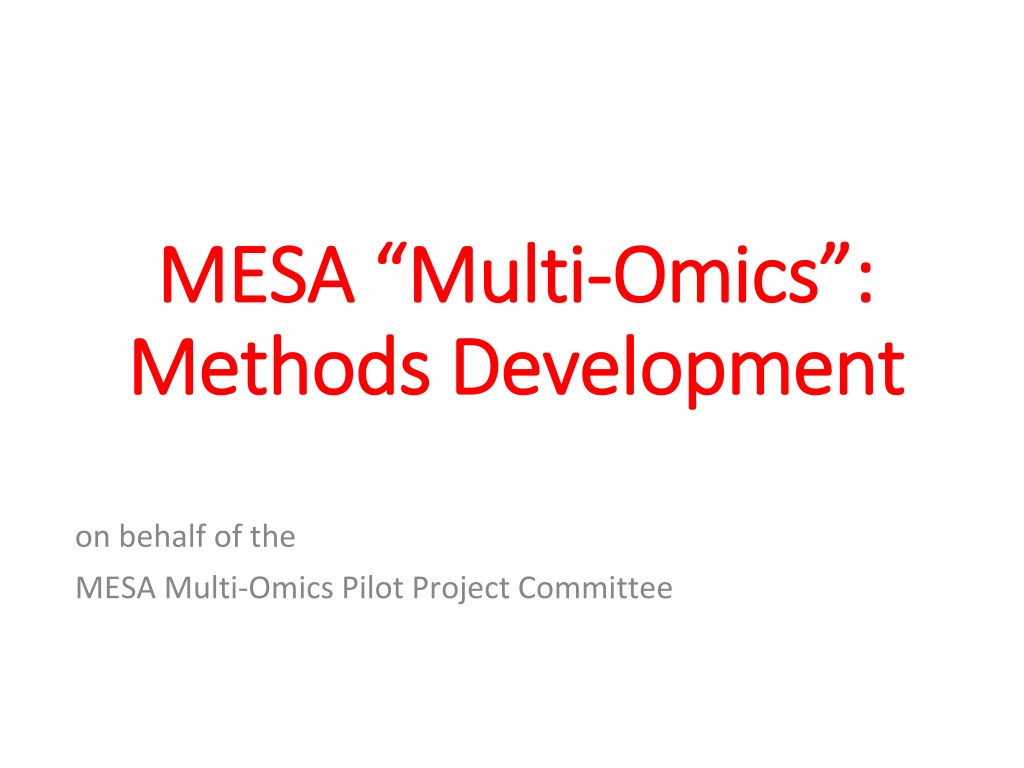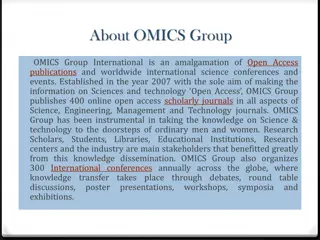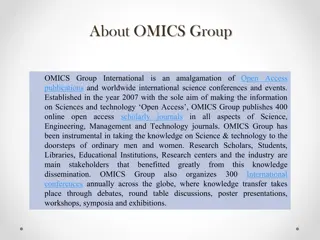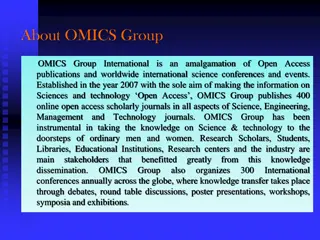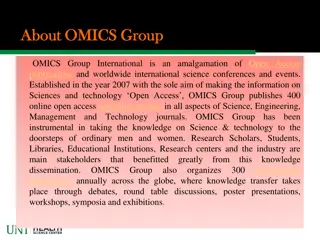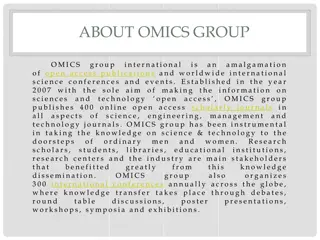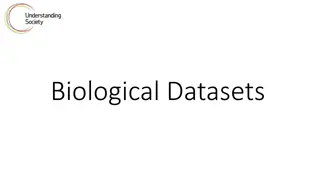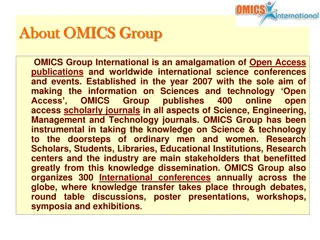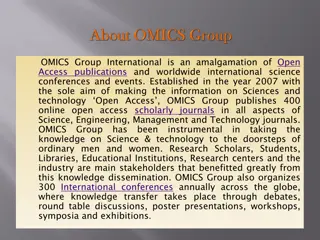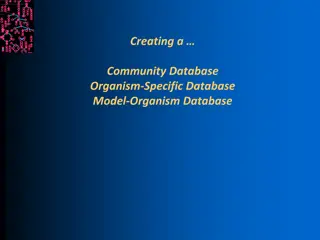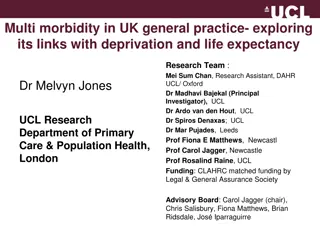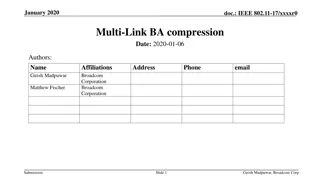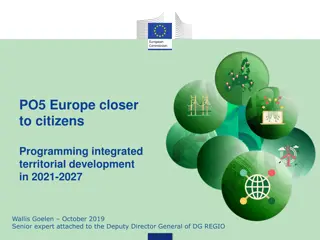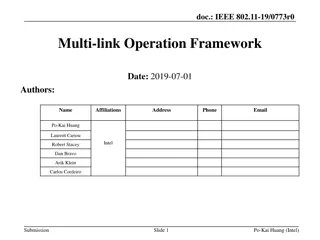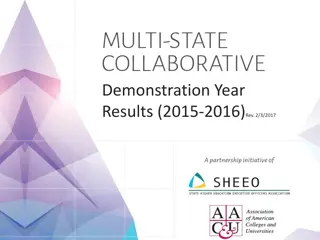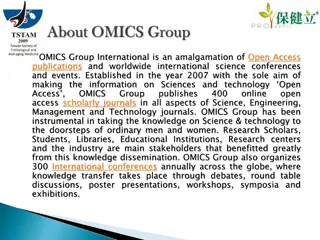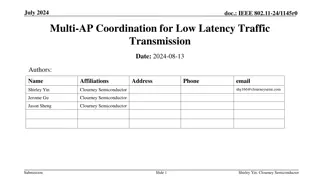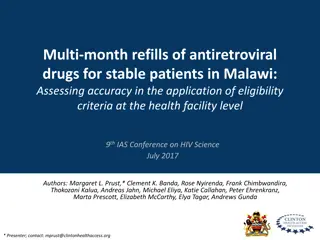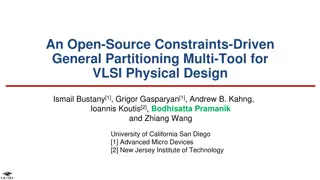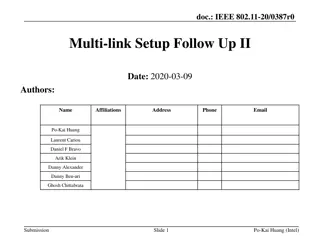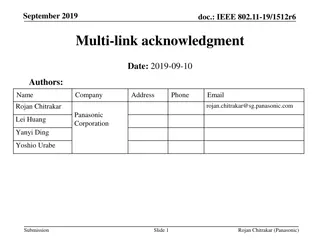Advancing Multi-Omics Research with Integrated Methods
Exploring the importance of multi-variate methods in multi-omics research to integrate diverse datasets such as phenotypes, metabolites, expression, methylation, and SNPs. The overview covers matrix-based methods, sparse methods for feature selection, and an example analysis from the MESA Multi-Omics Pilot Project. Canonical correlation analysis is also discussed in relation to expression and methylation data.
- Multi-Omics Research
- Integrated Methods
- Canonical Correlation Analysis
- Feature Selection
- High-Dimensional Data
Download Presentation

Please find below an Image/Link to download the presentation.
The content on the website is provided AS IS for your information and personal use only. It may not be sold, licensed, or shared on other websites without obtaining consent from the author. Download presentation by click this link. If you encounter any issues during the download, it is possible that the publisher has removed the file from their server.
E N D
Presentation Transcript
MESA MESA Multi Methods Development Methods Development Multi- -Omics Omics : : on behalf of the MESA Multi-Omics Pilot Project Committee
Why multi Why multi- -omics omics multi multi- -variate variate methods? methods? Obtaining the big picture of the entire data landscape requires integration of the multiple omics datasets with each other eg Integrate phenotypes, metabolites, expression, methylation, and SNPs, into a single analysis Yet also obtaining the needle(s) in the haystack requires feature selection appropriate to high dimensional data eg Linear regression on high dimensional data can lead to erroneous conclusions Lange et al 2014. Ann Rev Stat Appl 1:279-300. Donoho, 2000. High Dimensional Data Analyses: The Curses and Blessings of Dimensionality. Buhlmann & van de Geer 2011. Statistics for high dimensional data. James, et al 2013. Statistical Learning.
Overview of Methods Overview of Methods Matrix-based methods Integration of datasets Dimension reduction Robust to noise Examples: principal components association partial least squares canonical correlation analyses Sparse methods Feature selection Examples Penalized linear regression LASSO or Ridge penalty
Example 1: Example 1: Current MESA Current MESA multiomics multiomics data data 1191 subjects across 3 ethnic groups Affy 6.0 GWAS data from MESA SHARE CardioMetabochip data Expression chip and methylation chip data from Lu ancillary Further reduced: CAD snps with MAF>0.05 for CM chip: 4655 SNPs Expression data with SD in 4thquartile: 14,619 probes Methylation data withSD in 4thquartile: 121,441 methylation sites
Canonical correlation analysis Canonical correlation analysis Expression Methylation Variation In Expression NOT Associated Variation Associated Across BOTH Variation In Methylation NOT Associated
Expression Methylation
Expression Methylation C14orf167, aka DHRS4-AS Control of DHRS gene cluster short chain dehydrogenase metabolism mitochondrial protein
Example 2: IRAS Example 2: IRAS Da Phenotype: Sensitivity Index measured by FSIGT Residuals after covariate adjustment for age, gender, BMI SNP: 773,965 nuclear SNPs with MAF > 0.1 14 mitochondrial SNPs Metabolites: LC-Mass Spec by Metabolon Inc. 848 targeted metabolites Data Landscape ta Landscape
Data Landscape as Multi-Omic Data Blocks P (features) N (subjects) SI Sensitivity Index residuals after covariate adjustment 1 906 M metabolites 848 906 MT MT snps 14 906 G SNPs 773,965 906 Sparse partial least squares regression applied to data blocks 5 principal components analyzed 10 variates per component retained (sparsity)
Results: Loadings from the first component associated with Insulin Sensitivity for Each Block Metabolites MT SNPS Loadings on component 1 Block nuclear snps Genomic SNPs Insulin Sens
Metabolite block: Metabolite block: Plasmalogen Plasmalogenpathway metabolites pathway metabolites Loadings on component 1 Block metabolites 1-(1-enyl-palmitoyl)-2-arachidonoyl-GPC (P- 16:0/20:4)* 1-(1-enyl-palmitoyl)-2-palmitoyl-GPC (P- 16:0/16:0)* 1-(1-enyl-palmitoyl)-2-docosahexaenoyl-GPC (P-16:0/22:6)* 1-(1-enyl-palmitoyl)-2-palmitoleoyl-GPC (P-16:0/16:1)* 1-(1-enyl-stearoyl)-2-oleoyl-GPC (P- 18:0/18:1) 1-(1-enyl-stearoyl)-2-linoleoyl-GPC (P-18:0/18:2)* 1-(1-enyl-palmitoyl)-2-linoleoyl-GPC (P- 16:0/18:2)* 1-(1-enyl-palmitoyl)-2-oleoyl-GPC (P- 16:0/18:1)*
Genomic SNP block: Genomic SNP block: Smooth muscle myosin (MYH11) Smooth muscle myosin (MYH11) RP11-871F6.3 to REGL Chr 12 MYH11 Smooth Muscle Myosin Chr 11
Mitochondrial Mitochondrial Haplogroup Mitochondrial Mitochondrial haplogroups with SI Component 1 with SI Component 1 HaplogroupBlock: haplogroups C,D are negatively associated C,D are negatively associated Block:
MT MT haplogroups haplogroups C,D form one branch C,D form one branch of MT of MT haplogroups haplogroups in Latino/Hispanics in Latino/Hispanics
Comparison with a linear model Comparison with a linear model Coefficients Intercept Estimate 5.23 pvalue <2E-16 Age -0.024 6.4E-10 BMI -0.133 <2E-16 Gender 0.119 ns 1-(1-enyl-palmitoyl)-2-oleoyl-GPC 1.43 2.9E-14 (P-16:0/18:1)* rs8045778_T & MitoG15044A_G rs8045778_T & MitoG15044A_A Adjusted R20.318; F statistic 71.53 on 6 and 905 DF; pvalue<2.2e-16 -0.345 -0.076 0.00064 ns
Discussion Discussion A multi-omic analysis of several data blocks, insulin sensitivity phenotype, metabolite,mt-SNP, & genomic-SNP dataset using partial least squares suggested: Smooth muscle is a location of insulin resistance in Latino/Hispanics Changes in plasmalogen metabolites are involved in the physiology The observed association occurs follows the A & B mitochondrial haplogroup lineage
Further work Further work Increase workspace/computer infrastructure Develop data shaping tools Increase ability to perform analyses on ever larger matrices BigData methods Increase speed of matrix calculations Allows cross-validation procedure to determine the value of the penalty to use fastPCA methods perform matrix calculations using approximation shortcuts Parallelization and gpu s under exploration
